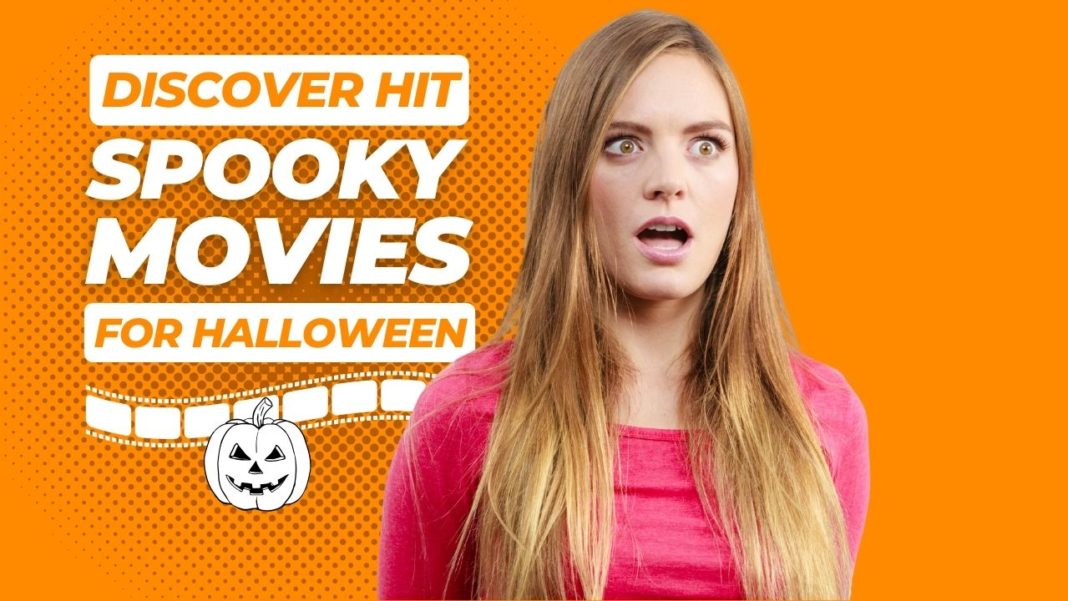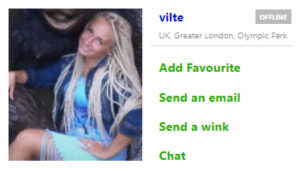When the first chill of October permeates the air and the last glimmer of daylight is engulfed by the lingering night, the evocative atmosphere for spooky tales is seamlessly conjured. Halloween – a festival intertwined with ghosts, goblins, and all things ghastly – implores an exploration into the eerie, opening a creaky door to the world of spine-tingling cinema that has perpetually captivated audiences. Whether it’s the classic horrors that invoke nostalgic frights or contemporary thrillers that introduce new nightmares, the genre inherently becomes a staple, an unspoken tradition, as we submerge into the spooky season. The films, in their eerie splendour, create not merely a visual spectacle but an immersive experience that allows us to flirt with fear from the safety of our snug surroundings.
Significance of Snuggling Up
Imagine, the screen flickers and transitions into a dimly lit, foreboding scene; your heart races as ominous music punctuates the silent tension. Alone, each creak and shadow might send shivers cascading down your spine, a solitary fear. But, embraced by the warm, reassuring company, there’s a peculiar comfort that blankets the fear, transforming it into an exhilarating adventure of shared trepidation and collective gasps. Snuggling up becomes more than a mere act of seeking comfort amidst the horror unravelling on screen; it’s a binding ritual, a shared vulnerability, where our fears are momentarily externalised and unified through the cinematic spectres before us. This collective experience, where frights are softened by the immediacy of a comforting hug or a knowing glance, paves the way for a unique social bonding, weaving moments that linger much like the ghostly tales etched into celluloid.
Blockbuster Classics for Halloween Viewing
Below are some classic blockbuster spooky films that have stood the test of time, providing ample jump scares, creepy atmospheres, and engrossing narratives that make them perfectly suited for Halloween viewing.
1. “Psycho” (1960, directed by Alfred Hitchcock)
- Brief: Often hailed as the mother of modern horror, “Psycho” illustrates a chilling story revolving around the unsettling Norman Bates and the eerie Bates Motel.
- Halloween Suitability: The film’s iconic shower scene and the unsettling atmosphere make it a staple for thrill-seekers desiring a classic fright.
2. “The Exorcist” (1973, directed by William Friedkin)
- Brief: Revolving around the terrifying possession of a young girl and the subsequent exorcism, this film explores theological horror in a profoundly unsettling manner.
- Halloween Suitability: Its deeply disturbing visuals and spine-chilling narrative make it a must-watch for those seeking a deeply unsettling experience.
3. “Halloween” (1978, directed by John Carpenter)
- Brief: It would be amiss not to include this slasher film that revolves around Michael Myers and his sinister pursuits.
- Halloween Suitability: Aptly named, “Halloween” becomes almost obligatory viewing during the spooky season, offering a blend of suspense, terror, and iconic horror imagery.
4. “A Nightmare on Elm Street” (1984, directed by Wes Craven)
- Brief: Introducing Freddy Krueger, a vengeful spirit attacking teens in their dreams, the film seamlessly melds reality and nightmare.
- Halloween Suitability: Freddy Krueger, with his terrifying visage and razor glove, is emblematic of cinematic nightmares, providing a surreal and frightful viewing experience.
5. “The Shining” (1980, directed by Stanley Kubrick)
- Brief: Set in the isolated Overlook Hotel, Jack Torrance’s descent into madness under supernatural influence crafts a visually and psychologically haunting tale.
- Halloween Suitability: The chilling atmosphere, eerie twins, and “Here’s Johnny!” moment offer a rich tapestry of horror elements to enjoy amidst the shadows of October.
6. “Poltergeist” (1982, directed by Tobe Hooper)
- Brief: When a family is besieged by violent ghosts, the ordinary turns extraordinary, and everyday objects become sources of terror.
- Halloween Suitability: The film transforms the familiar into the horrifying, offering a spectral visual feast suitable for ghostly October nights.
7. “Ghostbusters” (1984, directed by Ivan Reitman)
- Brief: Straying slightly from pure horror, “Ghostbusters” merges comedy and spooky supernatural elements as a team of scientists combat ghosts in New York City.
- Halloween Suitability: Offering lighter, comedic relief while retaining a spectral theme, it’s perfect for those desiring spooks without the scares.
8. “Beetlejuice” (1988, directed by Tim Burton)
- Brief: This whimsical yet darkly comic tale involves a couple who, after their demise, seek the assistance of a mischievous spirit, Beetlejuice, to scare away the living occupants of their home.
- Halloween Suitability: With its peculiar blend of the macabre and the ludicrous, “Beetlejuice” brings laughs and light frights, making it a delightful Halloween watch.
9. “Rosemary’s Baby” (1968, directed by Roman Polanski)
- Brief: Revolving around an expectant mother in a peculiar apartment building, this film delves into paranoia, cults, and the supernatural in a profoundly unsettling manner.
- Halloween Suitability: As a psychological horror that explores dark themes related to childbirth and Satanism, it casts an eerie spell suitable for a chilling night in.
10. “The Omen” (1976, directed by Richard Donner)
- Brief: A political family raises a son, Damien, only to discover his sinister and hellish origins.
- Halloween Suitability: Balancing a political thriller with supernatural horror elements, “The Omen” blends societal fears with supernatural terror, making it a deeply unsettling Halloween feature.
11. “Carrie” (1976, directed by Brian De Palma)
- Brief: Shy high-schooler Carrie discovers her telekinetic powers, leading to a catastrophic prom night.
- Halloween Suitability: As a poignant exploration of adolescence coupled with supernatural vengeance, “Carrie” forms a poignant and eerie Halloween viewing.
12. “The Silence of the Lambs” (1991, directed by Jonathan Demme)
- Brief: This psychological thriller introduces audiences to Dr. Hannibal Lecter, a psychiatrist and cannibalistic serial killer, assisting in the hunt for another murderer.
- Halloween Suitability: With its psychological depth and chilling performances, this film blends crime, horror, and drama, ensuring an intense, edge-of-the-seat experience.
13. “Bram Stoker’s Dracula” (1992, directed by Francis Ford Coppola)
- Brief: A visually striking adaptation of Stoker’s classic novel, exploring themes of love, death, and immortality.
- Halloween Suitability: Its romantic yet dark narrative, along with captivating Gothic aesthetics, creates a perfect vampire-laden viewing for a spooky evening.
14. “The Sixth Sense” (1999, directed by M. Night Shyamalan)
- Brief: A psychological thriller involving a troubled young boy who claims he can see and communicate with the dead.
- Halloween Suitability: Known for its famous plot twist and chilling narrative, “The Sixth Sense” provides an intriguing and eerie exploration of the afterlife.
15. “Scream” (1996, directed by Wes Craven)
- Brief: A meta-horror film that both parodies and honours the slasher genre, offering suspense and self-aware comedy.
- Halloween Suitability: The familiar ghostface mask and the blend of horror with whodunit mystery elements make “Scream” a thrilling and engaging Halloween choice.
These films encompass various sub-genres within horror and spooky themes, providing options that range from outright horror to those that blend thriller, comedy, and psychological elements into the eerie narratives. Offering different types of frights, from ghostly to psychological, ensures varied and enthralling Halloween viewing experiences for audiences.
Cinema’s Cobweb: Unravelling Hidden Easter Eggs in Horror Films
The dark and mysterious worlds created within horror films often conceal secrets, winking at the viewer from the shadows, inviting them to unravel enigmatic threads embedded within the tapestry of their narratives. These concealed gems, or ‘Easter eggs’, provide a labyrinthine cobweb of cinematic treasures for viewers to explore, enhancing engagement and prompting shared exploration into the cryptic depths of horror cinema.
Spotting the Spectres: Unveil Hidden Details
Navigating through the haunted hallways of filmic storytelling, viewers may stumble upon spectral details, deliberately concealed by filmmakers, intending to deepen the narrative or pay homage to the legacies of horror. Take, for instance, Alfred Hitchcock’s “Psycho”, where Marion Crane’s theft is slyly mirrored in Norman Bates’ own deceptive actions, creating a subtle, yet evocative parallel between predator and prey. Another poignant example lies within Stanley Kubrick’s “The Shining”. The infamous Room 237 harbours cryptic messages beyond its ghostly apparitions, with numerous theories suggesting that it conceals Kubrick’s own secrets, from allusions to Native American genocide to claims of his involvement in faking the moon landing.
These carefully veiled details encourage viewers to revisit these cinematic haunts, peeling back layers to reveal complex, multifaceted narratives which extend beyond the immediate horror manifesting on screen.
Shared Discoveries: Binding through the Unveiling
The communal exploration and unmasking of these hidden facets weave a shared experience that extends beyond passive viewing, transmuting film-watching into a collective adventure of discovery. Such hidden intricacies often serve as seeds for post-film discussions, where theories are woven and interpretations dissected amongst viewers, further enriching the shared horror experience.
For example, the cryptic symbology and concealed details in Ari Aster’s “Hereditary” become threads that viewers can unpick together, dissecting meanings and debating implications, thereby deepening the shared journey through the film’s dark and intricate narrative maze. Similarly, exploring the interconnected universe of James Wan’s “Conjuring” series, where subtle nods and connections are scattered across films, creates a collective treasure hunt, binding viewers through shared revelations and theories.
This collective unmasking and exploration of Easter eggs provide an enriched viewing experience, enabling deeper dives into the narratives, symbology, and craftsmanship of horror cinema. It allows viewers to traverse the spectral realms of horror together, discovering concealed details and appreciating the meticulous artistry enveloping these spooky tales, all while fortifying connections through shared cinematic exploration and discourse. These hidden gems morph viewing into a collective investigative journey, where the shrouds of mystery are gradually lifted, revealing the intricate weavings of narrative, theme, and homage concealed within the cryptic cobweb of horror cinema.
The Witching Hour: Concluding the Eerie Journey
As the final credits roll and the flickering images of ghouls, spectres, and monsters fade into the darkness, viewers are left suspended within the remnants of eerie worlds, lingering amidst the ethereal residue of spooky tales. The witching hour draws to a close, yet the echoes of frightful adventures and shared shivers endure, perpetually entwining within the memories of those who dared to embark upon these spectral cinematic journeys.
Reflection on the Role of Spooky Movies
Spooky movies, with their cobweb-laden corners, their echoing footsteps in shadowed halls, and their unsettling atmospheres, have long transcended mere entertainment, becoming stitched within the very fabric of cultural and social tapestries. These films serve not merely as temporal frights but as eternal embers which glow with tales of fear, mystery, and the unknown. They become conduits through which societies explore, express, and ultimately, commune with the dark, unknown realms that linger perpetually within collective consciousness. From the iconic shrills of Bernard Herrmann’s score in “Psycho” to the chilling visuals of distorted faces in “Poltergeist”, these moments are not merely imprints of cinema but indelible marks upon cultural memory, shared whispers of fear and fascination passed through generations.
Enduring Bond through Shared Frights
Amidst the trembling hands, the collective gasps, and the united jumps during frightful moments, there lies a unique bonding, a shared vulnerability that becomes intertwined with the very experience of the horror film itself. Through each hidden Easter egg unravelled, each spectral entity encountered, and every eerie story arc explored, viewers become companions within a shared odyssey, navigating through realms of fear and intrigue, together. These shared ventures through tales of horror and mystery serve to forge not only moments of immediate connection but also perennial traditions and memories, birthed from the coalescence of cinematic fright and collective experience.
The Halloween season thus becomes a portal, an invitation to huddle together within the dim glow of the screen, to explore, discover, and ultimately, to create collective tales woven from the threads of spooky cinema. It prompts viewers to forge their own traditions, to seek out new and old cinematic haunts, and to continue the perennial dance with the eerie, the unsettling, and the unknown.
So, as the spectral glow of All Hallows’ Eve beckons, may the reels of spooky tales continue to spin, weaving narratives that enchant, horrify, and unite us in the eternal twilight of shared storytelling and collective shivers. May the cobwebs of cinema’s eerie tales continue to cascade through generations, eternally entwining us within the enchanting embrace of spooky filmic tales.
The cloaked figures of horror directors past and present invite you, dear reader, to create, partake, and perpetuate your own traditions of frightful viewing, ensuring that the spectral ship of spooky cinema sails eternally upon the shadowed seas of cultural consciousness. May your Halloween be eternally enchanted with shared frights, collective gasps, and the continual unravelling of cinema’s intricate cobweb.






